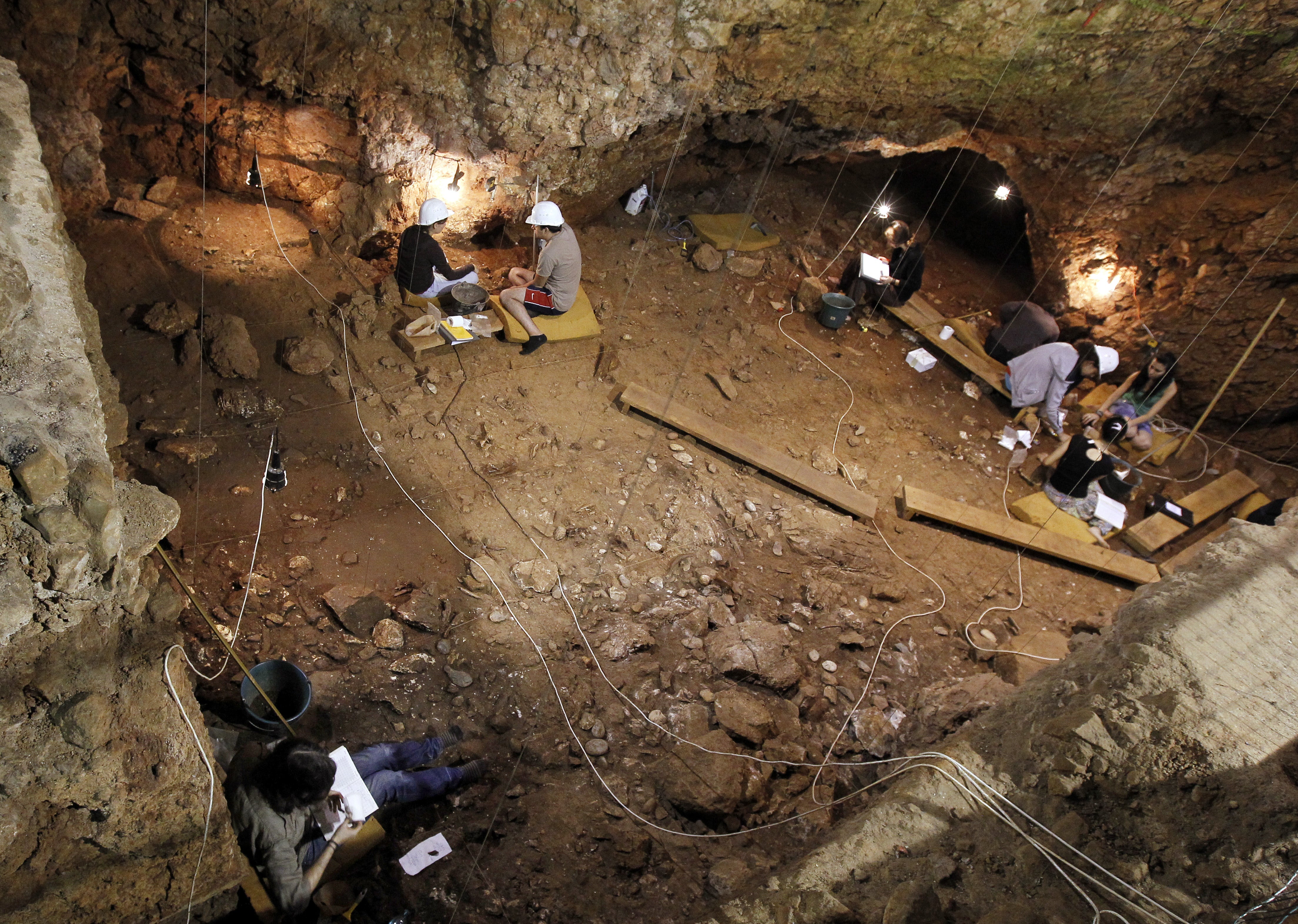Meat eating may not have been a big trigger in human evolution as previously thought, study says
Increased evidence of meat eating in Homo erectus explained by greater research of their time period, scientists say

Your support helps us to tell the story
From reproductive rights to climate change to Big Tech, The Independent is on the ground when the story is developing. Whether it's investigating the financials of Elon Musk's pro-Trump PAC or producing our latest documentary, 'The A Word', which shines a light on the American women fighting for reproductive rights, we know how important it is to parse out the facts from the messaging.
At such a critical moment in US history, we need reporters on the ground. Your donation allows us to keep sending journalists to speak to both sides of the story.
The Independent is trusted by Americans across the entire political spectrum. And unlike many other quality news outlets, we choose not to lock Americans out of our reporting and analysis with paywalls. We believe quality journalism should be available to everyone, paid for by those who can afford it.
Your support makes all the difference.The evolution of “quintessential” human traits in the ancestral species Homo erectus is likely not linked to a major dietary shift towards meat consumption as previously believed, a new study has suggested.
Traits characteristic of modern humans, such as large brains, first appeared in Homo erectus nearly two million years ago – an evolutionary transition that previous studies have linked to a major dietary shift involving greater meat consumption.
While archaeological evidence for meat eating increases dramatically after the appearance of Homo erectus, new research published in the journal PNAS on Tuesday suggested, however, that this increase can be explained by greater research attention on this time period skewing the evidence in favour of the “meat made us human” hypothesis.
“Generations of paleoanthropologists have gone to famously well-preserved sites in places like Olduvai Gorge looking for — and finding — breathtaking direct evidence of early humans eating meat, furthering this viewpoint that there was an explosion of meat eating after 2 million years ago,” study co-author W Andrew Barr from the George Washington University said in a statement.
“However, when you quantitatively synthesise the data from numerous sites across eastern Africa to test this hypothesis, as we did here, that ‘meat made us human’ evolutionary narrative starts to unravel,” Dr Barr added.
The scientists compiled published data from nine major research areas in eastern Africa, including 59 site levels dating between 2.6 million and 1.2 million years ago.
From this data, they tracked early human carnivory using several metrics, including the number of zooarchaeological sites preserving animal bones that have cut marks made by stone tools, the total count of animal bones with cut marks across sites, and the number of separately reported stratigraphic levels.
When accounting for variation in sampling effort over time, the researchers said there was no sustained increase in the relative amount of evidence for carnivory after the appearance of H. erectus.
While the raw abundance of modified bones and the number of zooarchaeological sites and levels “demonstrably increased” after the appearance of H. erectus, scientists said these increases were mirrored by a complementary rise in sampling intensity.
Based on these observations, researchers said intensive sampling, rather than changes in human behaviour, could be the cause.
“When correcting for sampling effort, there is no sustained increase in the amount of evidence for hominin carnivory between 2.6 and 1.2 Ma [million years ago],” the scientists noted.
“This study changes our understanding of what the zooarchaeological record tells us about the earliest prehistoric meat-eating. It also shows how important it is that we continue to ask big questions about our evolution, while we also continue to uncover and analyse new evidence about our past,” Briana Pobiner, another co-author of the study, said.
The scientists called for more studies to find alternative explanations for why certain anatomical and behaviouural traits associated with modern humans emerged.
Such explanations to explore, according to the researchers, include the provisioning of plant foods by grandmothers and the development of controlled fire for increasing nutrient availability through cooking.
They said that these possible explanations currently do not have a strong grounding in the archaeological record, adding that more ground work remains to be done.
“Our observations undercut evolutionary narratives linking anatomical and behavioural traits to increased meat consumption in H erectus, suggesting that other factors are likely responsible for the appearance of its human-like traits,” the scientists wrote.
Join our commenting forum
Join thought-provoking conversations, follow other Independent readers and see their replies
Comments